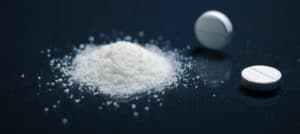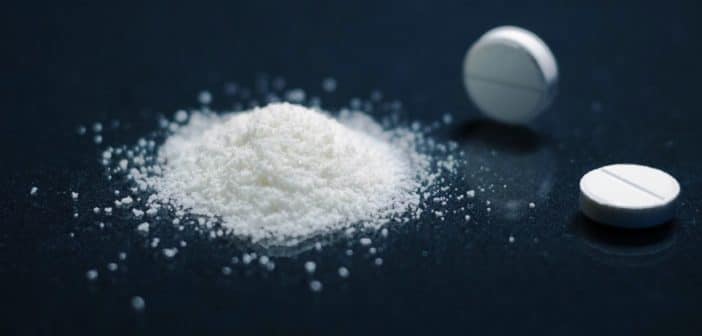 When some of this year’s high school graduates collect their diplomas, the country’s drug epidemic will follow them. According to a report released by HealthGrove.com, marijuana and OxyContin—the nation’s most popular prescription painkiller—rank among the drugs high schoolers abuse most. HealthGrove analysts used data from the National Institutes on Health (NIH) to rank the drugs teenagers are using and abusing the most these days. The result is a list that reveals some sobering truths about our nation’s youth and our future.
When some of this year’s high school graduates collect their diplomas, the country’s drug epidemic will follow them. According to a report released by HealthGrove.com, marijuana and OxyContin—the nation’s most popular prescription painkiller—rank among the drugs high schoolers abuse most. HealthGrove analysts used data from the National Institutes on Health (NIH) to rank the drugs teenagers are using and abusing the most these days. The result is a list that reveals some sobering truths about our nation’s youth and our future.
At The Top Of The Bottom
When I was in high school, I couldn’t tell you where to find drugs. Back then, I was simply too interested in The X-Files to care. I was the editor of the school newspaper and way too busy trying to turn that thing into Entertainment Weekly to worry about drugs. I heard whispers and rumblings here and there: friends suspended over a tiny bag of pot; rumors of a “ditch day” where a case of Bud Light was involved. I wasn’t tapped into that world, even though I’m sure it wasn’t that far out of reach. Now, judging from HealthGrove’s analysis, an entirely different world of drugs awaits high school students.
One thing, however, remains the same—weed. In spite of proven negative affects on the teenage brain, marijuana is still comfortably in first place, outpacing its nearest rival (amphetamines) by a whopping 27.2%. “As of 2014, nearly 34 percent of high school seniors said they used marijuana in the past year,” the HealthGrove article said. In fact, marijuana’s ranking hasn’t changed much at all in the last 20 years. The drug remains illegal under federal law, but states continue to pass their own legislation. Those same state laws will help keep marijuana at the top of the list, as reflected in some recent surveys like this one that show “a softening of attitudes around some types of drug use, particularly decreases in perceived harm and disapproval of marijuana use.”
Citing a National Institute on Drug Abuse study from 2014, HealthGrove said: “By senior year, 70 percent of high schoolers have tried alcohol, 50 percent have tried an illegal drug, 40 percent have smoked a cigarette and approximately 20 percent will have used a prescription drug for a non-medical purpose.” For this father of three, these numbers alone are enough to justify home-schooling.
Prescribing a Disaster
It’s a pretty sad commentary on the state of our nation’s drug crisis when I’m relieved to find familiar over-the-counter drugs on the list of drugs teens are abusing. Cough and cold syrup sits at number six—mainly because of its mind-altering chemical dextromethorphan (DXM). However, chugging DayQuil for a buzz is steadily on the decline among high schoolers—down from 8% to 4% since 2006. It’s surrounded by a litany of prescription drugs, such as Adderall and Vicodin. Despite Vicodin abuse dropping sharply, Adderall is number three overall. The 2014 National Institute on Drug Abuse study claims that “most teens get [Adderall] from friends or relatives; a smaller percentage misuse or abuse pills that had been prescribed for them for a medical problem.”
Also charting on the list were amphetamines, hallucinogens, tranquilizers and cocaine. Among these, only amphetamines (number two on the list) remained relatively steady in abuse over the past decade. The drug also barely edged out Adderall by 0.2%, with 7.7% of high school seniors reporting its use in the past year. These drugs affect the central nervous system and are typically prescribed to treat attention deficit disorders in children and adults alike. According to the NIH, “prescription stimulants have a calming and ‘focusing’ effect on individuals with ADHD.” By treating ADHD with stimulants, patients have seen improved self-esteem, social interactions and thinking. Also, at number five (4.7% of high school seniors), tranquilizers like Valium and Xanax remain popular.
Is There A Silver Lining?
With all the doom and gloom in HealthGrove’s analysis of drug abuse data, it’s worth exploring some of the encouraging trends hidden within. Of the 15 drugs listed, only one was still trending upward: Adderall. Everything else—from synthetic marijuana to the psychoactive Mexican herb salvia—was ticking down. Even the use of OxyContin, arguably the heart of the nation’s current drug epidemic, was waning among high school seniors. The report also confirms the NIH’s Monitoring the Future survey, which noted “decreasing use of alcohol, cigarettes, and prescription pain relievers; no increase in use of marijuana; decreasing use of inhalants and synthetic drugs, including K2/Spice and bath salts; and a general decline over the last two decades in the use of illicit drugs.”
The 2014 survey showed that while alcohol abuse was reported by 37.4% of high school seniors, it’s still far lower than the 43.5% reported in 2009. Similarly, binge drinking fell from 31.5% (at its peak in 1998) to 19.4%. Cigarette smoking also continues to plunge, dropping to its lowest rate in the survey’s history (6.7%). The survey did, however, note that some forms of tobacco use are as popular as they are trendy, with hookahs and e-cigarettes on the rise. Interestingly, while marijuana is number one in both the HealthGrove report and the NIH survey due to shifting attitudes, “56.7% of seniors say they disapprove of adults who smoke it occasionally, and 73.4% say they disapprove of adults smoking marijuana regularly.” Apparently, while high school seniors have opinions on the drug’s harmful effects, they have even stronger opinions on seeing themselves using it later in life.
It’s encouraging to see that, for most of the drugs ranked on the list, it shows single-digit populations instead of double-digit ones. What’s fascinating about the new drug abuse survey is how it paints a clear portrait of a very cloudy subject. High schools will certainly never be immune to the world outside their walls. But, for me, the report offers some hope that my children won’t grow up in an environment where drugs are normal. If nothing else, I feel they have a genuine chance to graduate high school (and life) addiction-free.
Sponsored DISCLAIMER: This is a paid advertisement for California Behavioral Health, LLC, a CA licensed substance abuse treatment provider and not a service provided by The Fix. Calls to this number are answered by CBH, free and without obligation to the consumer. No one who answers the call receives a fee based upon the consumer’s choice to enter treatment. For additional info on other treatment providers and options visit www.samhsa.gov.




